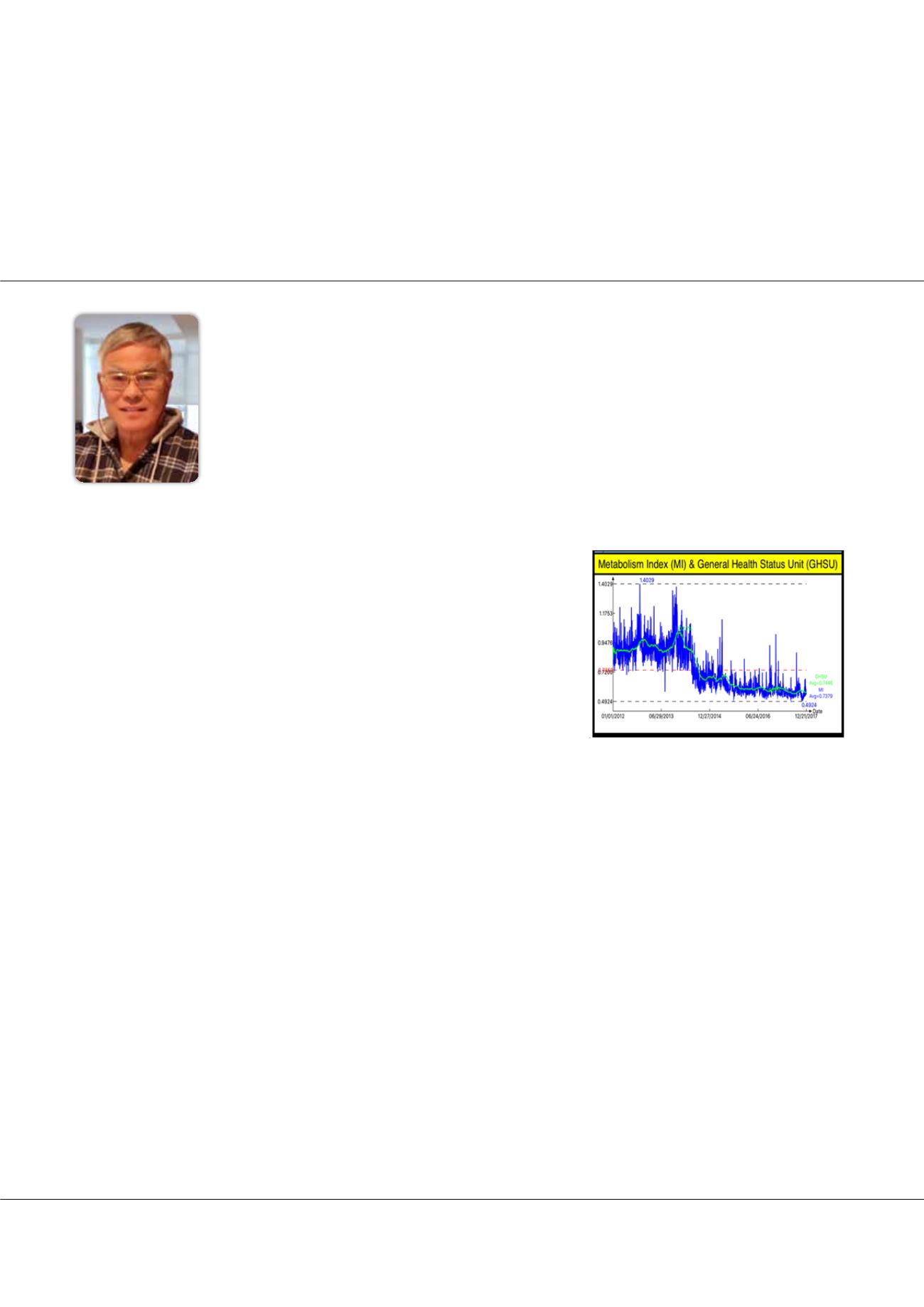

Volume 7
Journal of Metabolic Syndrome
ISSN : 2167-0943
Metabolic Syndrome 2018 | Endoscopy 2018
June 28-29, 2018
Page 22
Notes:
conference
series
.com
ENDOCRINOLOGY AND METABOLIC SYNDROME
&
ABDOMINAL IMAGING AND ENDOSCOPY
June 28-29, 2018 Amsterdam, Netherlands
12
th
International Conference on
3
rd
International Conference on
JOINT EVENT
Gerald C Hsu, J Metabolic Synd 2018, Volume 7
DOI: 10.4172/2167-0943-C1-007
Using math-physics medicine to analyze metabolism and improve health conditions
T
he author has spent seven years and 18,000 hours to study, analyze and
research his chronic disease conditions. Here is the comparison between 2010
and 2017: Weight: 205/172 lbs; Waistline: 44-34 inches; PPG: 350/116 mg/dL;
FPG: 185/119 mg/dL; Daily glucose: 280/117 mg/dL; A1C: 10.0/6.1%; ACR:
116/12 mg/mmol; Triglycerides: 1161/69 mg/dL. He used mathematics, physics,
engineering modeling, and computer science (big data analytics and AI) to derive
the mathematical metabolism model and three prediction tools for weight, FPG,
and PPG with >30 input elements. This study includes 11 categories: weight,
glucose, blood pressure, lipids, food, water, exercise, sleep, stress, life pattern
regularity, time, with ~500 input and output elements. He collected more than
1 million “clean” data over seven years. He defined two new terms known as the
metabolism index (MI) and general health status unit (GHSU). The “health state”
is expressed as the “break-even” line which is 73.5%; above this percentage is regarded “unhealthy” and below the break-even
line is “healthy”. The results showed that he was very unhealthy (80%-110%) before 2013. The curve went through a sharp
decline in 2014 due to his research. After 2015, he was “healthy” (60%-70%). As of 12/21/2017, his MI is 55.3% and GHSU is
56.1%. His entire previous lab test results confirmed with the diagram showing his chronic disease conditions is well under
control.
Biography
Gerald C Hsu has received his honorable PhD in Mathematics and majored in Engineering at MIT. He attended different Universities over 17 years and studied seven
academic disciplines. He has spent 20,000 hours in T2D research. First, he studied six metabolic diseases and food nutrition during 2010-2013, and then conducted
research during 2014-2018. His approach is “Math-Physics and Quantitative Medicine” based on mathematics, physics, engineering modeling, signal processing, computer
science, big data analytics, statistics, machine learning, and AI. His main focus is on preventive medicine using prediction tools. He believes that the better prediction, the
more control you have.
g.hsu@eclaireMD.comGerald C Hsu
eclaireMD Foundation, USA
















